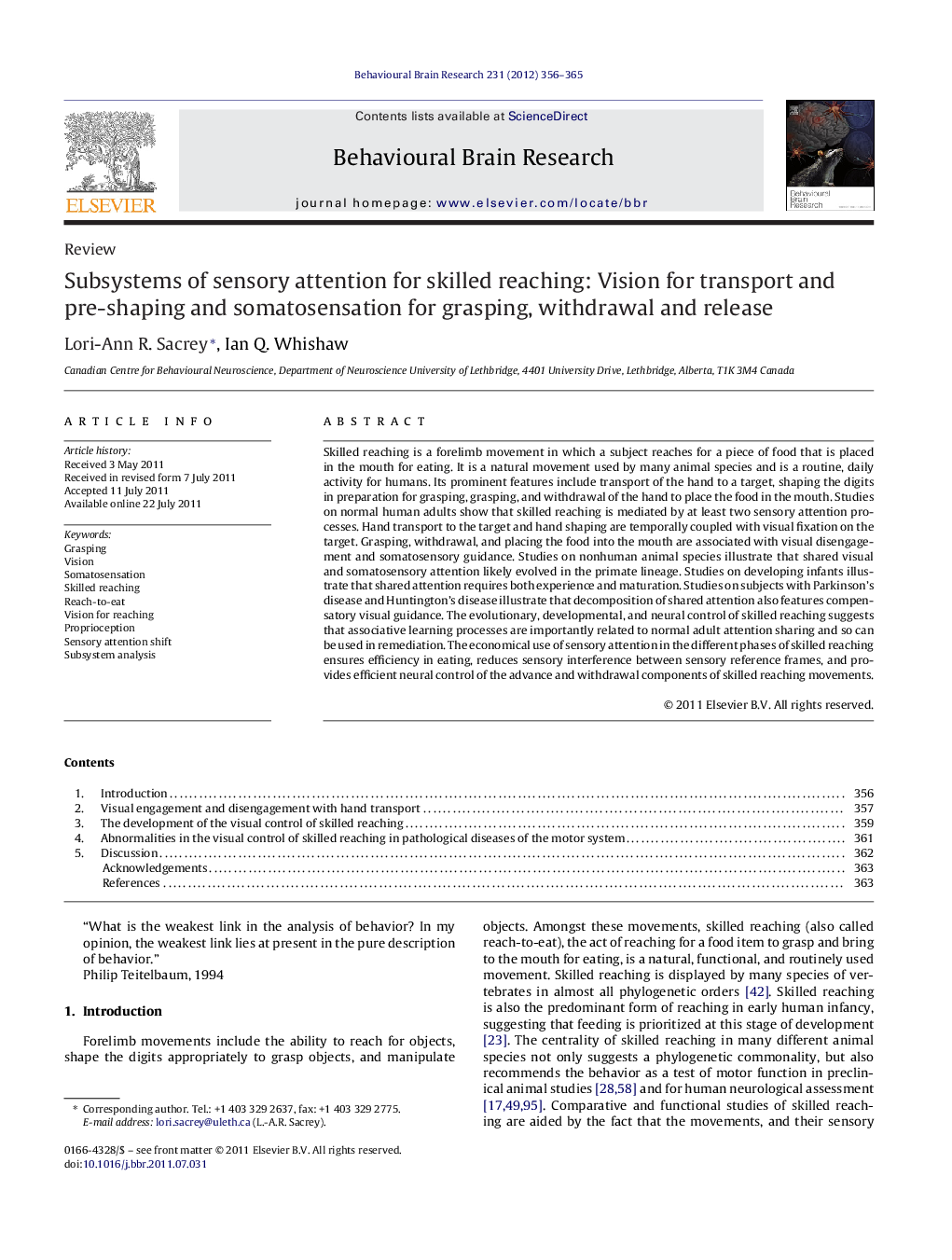| کد مقاله | کد نشریه | سال انتشار | مقاله انگلیسی | نسخه تمام متن |
|---|---|---|---|---|
| 4313079 | 1289984 | 2012 | 10 صفحه PDF | دانلود رایگان |

Skilled reaching is a forelimb movement in which a subject reaches for a piece of food that is placed in the mouth for eating. It is a natural movement used by many animal species and is a routine, daily activity for humans. Its prominent features include transport of the hand to a target, shaping the digits in preparation for grasping, grasping, and withdrawal of the hand to place the food in the mouth. Studies on normal human adults show that skilled reaching is mediated by at least two sensory attention processes. Hand transport to the target and hand shaping are temporally coupled with visual fixation on the target. Grasping, withdrawal, and placing the food into the mouth are associated with visual disengagement and somatosensory guidance. Studies on nonhuman animal species illustrate that shared visual and somatosensory attention likely evolved in the primate lineage. Studies on developing infants illustrate that shared attention requires both experience and maturation. Studies on subjects with Parkinson's disease and Huntington's disease illustrate that decomposition of shared attention also features compensatory visual guidance. The evolutionary, developmental, and neural control of skilled reaching suggests that associative learning processes are importantly related to normal adult attention sharing and so can be used in remediation. The economical use of sensory attention in the different phases of skilled reaching ensures efficiency in eating, reduces sensory interference between sensory reference frames, and provides efficient neural control of the advance and withdrawal components of skilled reaching movements.
► Healthy adults use vision to advance the hand and shape the digits for grasping.
► Healthy adults use somatosensation to grasp and withdraw the hand to the mouth.
► Human infants develop the adult form of sensory control of reaching by 12 months of age.
► PD and HD disrupt the dual sensory attention system, relying on vision to complete reaching.
Journal: Behavioural Brain Research - Volume 231, Issue 2, 1 June 2012, Pages 356–365